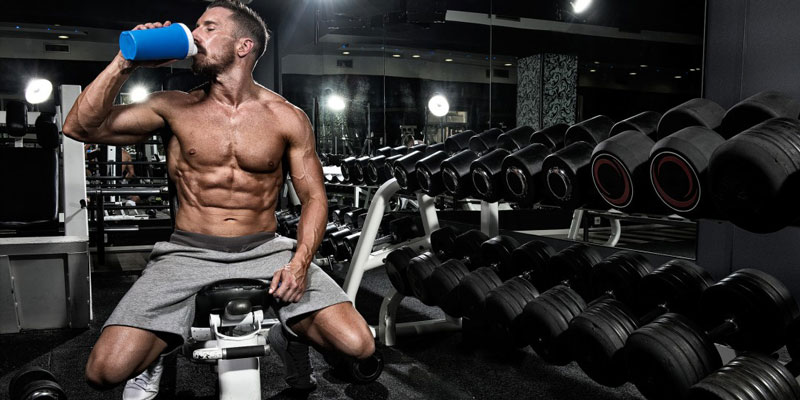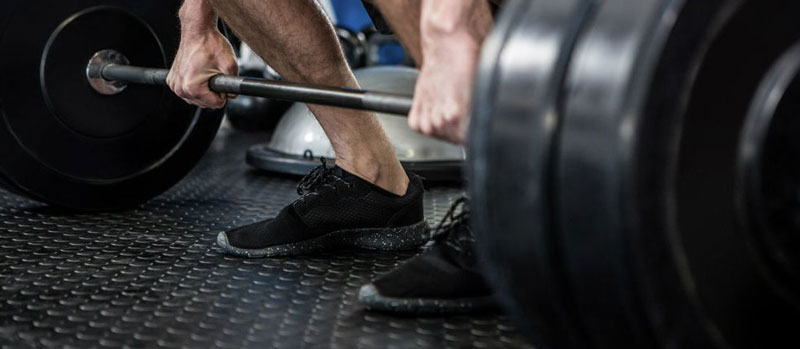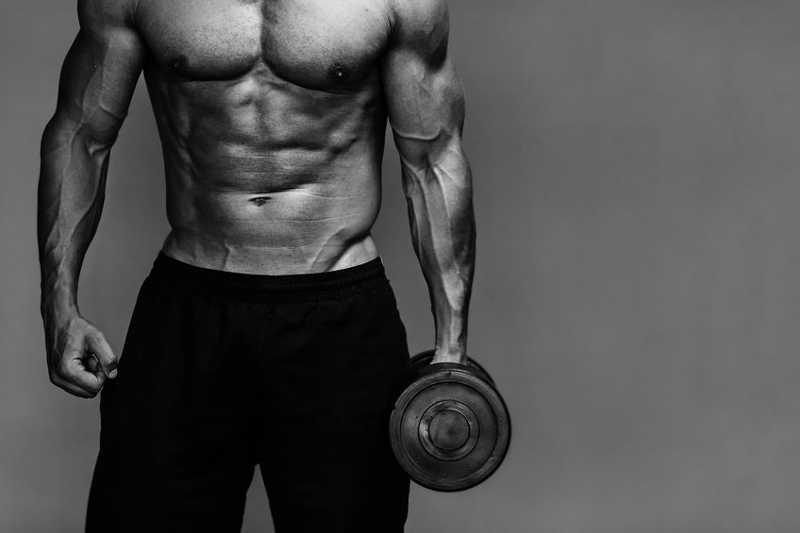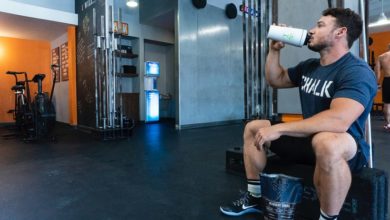
Nailing down your training frequency could be the difference between strength and size success or wasting away your gains. Get it right, and you’ll be unstoppable. Get it wrong and you’ve got a choice between burnout or minuscule momentum. So, what is the best training frequency? We’re about to find out.
What is training frequency?
Training frequency can be defined as the amount of times you train a muscle group. For this article we’ll think of it as specified training days or sessions.
While it’s common for us to consider frequency as just hitting the gym, it’s important to factor in what’s at work. We’ll be talking about the amount of times a muscle group itself is trained.
Unlike standalone training volume, there isn’t a ton of research into volume matched frequency. Most of what we think we know as lifters is mainly anecdotal.
Whatever worked for your buddy must work for you, right?
That’s usually how we all learn.
But the truth about frequency is becoming more apparent thanks to today’s researchers. We’re starting to see more evidence showing how more might not always be better, despite what the old-school mantras say.
It also seems that the best frequency for you might depend on your goals too. Training for strength doesn’t necessarily need the same approach as size gains.
But, before we get ass-to-grass into the differences, let’s look at the most important factor to muscle development – volume load.
 What is volume load?
What is volume load?
While the science behind volume matched frequency is limited, volume load itself is never ending. We now understand it to be the driving force behind muscular adaptations and it’s a pretty standard thing to track.
Muscle size and strength has a direct dose response to volume load. Therefore, as VL increases, so should your gains.
That’s providing we’re not hitting maximum recovery volume (MRV) anyway. This is the dark realm of diminishing returns, which we’ll fearfully look at later.
But what even is volume load?
Remember in lab class when you’d measure the volume of an object or glass of water?
Well, VL can be thought of in the same way. You’re essentially summing up the everything within the parameters of a shape.
Except instead of measuring water or theoretical thin air, you’re summing up work. To be more specific, total work carried out over a period of time.
This might be over three sessions per week, or just a single set of leg presses. But at the end of it you’ll have a number for how much work you’ve actually done.
Measuring volume load
We usually measure volume load (VL) by multiplying sets (S), by reps (R), and load/intensity (W). You might want to picture it as: VL = S x R x W.
So, ten sets of ten reps at 150 lbs may have a total load volume load of: 10 x 10 x 150 = 15,000.
All you need is those initial three figures and you’re good to go.
[infobox]How you split this volume up throughout training days for example will determine your frequency.[/infobox]
Why volume load matters
Training volume load matters a ton. Because without getting enough of it, you’ll significantly sever the gains you can make.
Adaptations are undeniably dose responsive. You literally get out what you put in, much like a bank account.
Volume load helps you measure just how much work you’ve exposed your muscles too.
Not making enough gainz? Sensibly increase volume load. Feeling drained, worn out, and picking up injuries? Time to dial it down a little depending on the severity.
Increasing volume should also raise time under tension. And as TUT is a primary driver of anabolism, also known as muscle growth, it’s easy to see why overall volume is important.
[infobox]At the end of the day it’s how much work you do that should determine your gains.[/infobox]
How much volume load do you need?
At present there’s no hard or fast rule to strength and growth. But research from the American College of Sports Medicine suggests [1];
- 1-3 sets of 8 – 12 reps @ 70-85% for beginners
- 3-6 sets of 1-12 reps @ 70-100% for advanced lifters
What you’ll typically find as a standard approach is low-rep, higher weight for strength. These intense bouts of brutish pulling or pushing are then separated by longer rests for recovery.
It’s not uncommon for strength athletes to take four or five minutes before sets – sometimes longer. Lifting weights at this intensity is a shock to the central nervous system too, which requires greater periods of rest to recuperate.
However, hypertrophy training usually utilizes high-rep, lower weight sets. Bodybuilders who are experienced will usually extend their sets beyond the recommendations we just looked at too.
Plus, they’ll throw in shorter rest times to tire out their muscles. This level of fatigue causes additional fiber damage due to lactic acid build up.
Hitting your stride
Most trained men tend to hit their stride between 10-20 sets per week. The reality is, it’s all about finding the sweet spot without overdoing it.
Any more volume, and you’re likely to experience diminishing returns, overreaching, and then overtraining. If you’ve ever been there you’ll know how hard it is to bounce from a bout of the latter.
This is because volume driven muscular adaptations work like a bell curve. There comes a point when more stops being better. It’s all quite literally too much for you to handle.
So, to find the right set range for your own training, consider your goals. Aim for 10-20 per muscle group in a week and remember there is a point of diminishing returns.
 Frequency – fitting it all in
Frequency – fitting it all in
Fitting the right amount of sets into your workout week doesn’t need to be hard. Most people are happy enough finding a split or routine that fits their lifestyle. In a way, you’ve probably had your go-to method for years based on trial and error.
So, why do we care so much about frequency?
[infobox]The truth is; your frequency isn’t the be all and end all of hitting your goals. Your volume and recovery are far more important. [/infobox]
In the next section we’ll break down the bonus points for multi-day efforts.
Higher training frequency benefits for growth
It’s generally considered that frequencies of twice per week or more are better than once. Whereas the bro-split used to reign supreme for stacking strength and mass, science has brought us a new set of frequency data to rep out.
Leading researcher Brad Schoenfeld PhD pioneered a new approach in a 2016 meta-analysis. He concluded that when volume-load was kept the same, training more than once a week resulted in better hypertrophy gains.
Findings based on major muscle groups
An important thing to understand about these findings is they’re based on major muscle groups. So, when Schoenfeld talks about increasing frequency, he doesn’t mean a bro-split. Instead, it’s all about hitting the same spot twice or more within seven days [2].
In a separate study, Zaroni et al. also saw greater muscle thickness developed during frequencies of five times per week. To find this out he compared test subjects who trained five days over seven days against your stereotypical, one day per muscle group split.
According to Zaroni’s team, the greater size adaptations in the elbow flexor (bicep) was a result of increased frequency. Their results suggested that although frequency might not have as much impact on strength, it’s something to consider for accelerating hypertrophy [3].
Increased frequency for hypertrophy better for beginners
Training five days per week might be excessive for new lifters. Depending on your lifestyle, hitting the gym at this frequency isn’t as easy as two or three times.
Fortunately, the latter might just be the magic number for beginners. Because not only can they bag a repeated spike in muscle protein synthesis, but do so without facing higher RPEs.
Ochi et. al released a study in 2018 investigating the effect of volume-matched strength training carried out at different frequencies. Their aim was to see how one session compared to three for beginner lifters.
During a period of 11 weeks, the scientists had untrained subjects perform knee-extensions at around 67% 1RM. One group hit six sets of 12 in a singe session, while the other did two sets of 12 over three.
Higher frequency benefits proven for beginners
The researchers also recorded thigh circumference to measure hypertrophy and isometric voluntary contraction (MVC) to check strength. RPE (rate of perceived exertion) was also measured.
By the end of the 11 weeks both groups showed significant growth and MVC gains. Yet, RPE was much higher in the group that trained once per week instead of three.
The takeaway? Increasing frequency to three times per week could let beginners improve their strength and size while still minimizing fatigue [4]. In a practical sense this could help new lifters adapt to the training lifestyle.
 Frequency and protein synthesis
Frequency and protein synthesis
Post-workout protein synthesis elevation is another reason to consider frequent training.
Researchers aren’t clear exactly how much of an anabolic spike lifters experience after training, but one study says it could peak at around 109% 24-hr post-exercise. Interestingly, 4-hr after training may see a 50% MPS increase, while 36-hr post training levels might drop down to <14% [5].
When looking at mixed muscle protein synthesis, it appears that as training age increases, the spike related to lifting decreases (the research isn’t definitive).
One reason is because certain proteins necessary for endurance activities don’t need to be adapted once we become experienced in the gym. Whereas the myofibrillar protein related to strength and size may still spike, others won’t.
What does that mean for you?
So, what does this all mean for you? Theoretically, by training more frequently you can experience more than one muscle protein synthesis spike per muscle group every week. Because of this, you could have a higher rate of muscle growth.
Say for example you’re trying to hit 12 sets of leg extensions to target your quads. By splitting your sets into two, six-set sessions you could experience two MPS spikes. This means that the muscle rebuilding process doesn’t just take a jump once, but twice instead.
The trick here would be to set them far enough apart, maybe one or two days, so the increase didn’t overlap. Plus, by separating your sessions you’d allow time for better recovery.
[infobox]It doesn’t sound like much, but a day off can be the difference between burnout or being ready to hit the iron hard.[/infobox]
Higher frequencies might not work the same for strength
When it comes to the strength building community frequency is just as much a protected belief. Within powerlifting circles for example, it’s not really heard of to exceed training each lift twice per week. As for the three main movements; squat, deadlift, and sometimes bench press; most athletes usually opt for the single session.
Of course, there are the outliers. Some athletes are absolute savages and can handle much higher frequencies at volume. But for the sake of this article, we’re talking about your average, trained strength seeker.
Interestingly, an increase in strength related to frequency isn’t exactly the same as size. Whereas hypertrophy increased at higher numbers of volume-matched training session across the board, upper- and lower-body strength doesn’t. Well, not at the same rates anyway.
What the studies into strength say
When piled together current research shows that frequency only really benefits upper-body strength. So, while squatting once a week should be enough for the legs, pressing with the upper body around three times might be beneficial.
Most of the studies out there point towards 20-23% faster strength gains at higher frequencies [6]. Plus, it also looks like progress is linear when aligned with two, three, and four sessions per week under the iron.
One thing to consider though is that there isn’t concluding evidence on five or six weekly strength sessions. Plus, there are other outside influences to consider such as practicality, rest, and stress…
 The practical side of training frequency
The practical side of training frequency
While it’s all well and good getting deep into the science, life isn’t one long peer-reviewed journal. It’s the day to day practicality that brings results. That’s why you’re here, right? To learn how to use frequency to your own advantage.
As we all know, it’s the plan you stick to that will bring the best results.
Consistency always beats short term intensity.
That’s a fitness fact we can’t deny unless we’re looking solely at peaking for an event.
So, as we aren’t, let’s talk practicality.
The practicalities of higher training frequency (HF) include:
- Minimized RPE and fatigue
- More MPS spikes
- More times visiting the gym
- Spread volume
- Easier to increase volume
- Shorter workouts
- Fitting shorter, more regular workouts easily into your lifestyle
- PPL splits, full-body workouts, or upper-lower splits
The practicalities of lower volume training frequency (LF) include:
- Longer workouts if you enjoy them
- Longer rest between muscle groups
- One muscle group targeted each day
- Condensed volume
- Bodybuilder-style bro-split might be enjoyable
How do you feel about training?
The way you feel about training can directly influence how you grow or become stronger. If the thought of making time to visit the gym everyday stresses you out, your gains will reflect this.
On the other hand if you want to train more frequency but restrict yourself to three days, this can be stressful too. Stress then leads to increased cortisol, inhibited testosterone, and slower gains. Plus, many men feel that training more frequency helps them maintain their mental health.
Therefore, it’s worth thinking about practicality when choosing your preferred frequency. The evidence seems to point towards higher-training frequencies more than once a week to be better.
But, if you prefer your standard bro-split, stick with it.
However, if you’re really getting into this higher-frequency thing, keep reading…
Other cases for higher training frequency
Who gets to benefit from higher training frequency the most? Unsurprisingly, scientists say younger people might have the most gains to make.
Crgic et al. pulled together a meta-analysis on the relationship between frequency and muscular strength gains. When they published it in 2018, the research team revealed that although all age-groups could benefit from higher frequencies, younger people got the most from it [7]. This is good news if you’re a fresh eyed young buck.
Another point Crgic et al. makes is that, when volume isn’t matched, higher frequencies do show signs of improving overall strength gains. The idea here is that by throwing more workouts into your week, say 3x for squat, you can easily increase volume.
And as volume and intensity are both drivers of muscle adaptations – unmatched frequency can up your gains [7].
Imagine it like this…
Tearing through a hard bench press session might leave you spent for the day. But you can return later down the line and complete it again could you not? Give you a day or two rest and you’re ready to go back with a vengeance.
On the other hand, if you only did that session you’d be spent. Then, if you waited a week, you might not have made the most out of any remaining available volume. That extra few sets you had two days down the line would never see the light of day.
[infobox]Bottom line – frequency is an easy and effective way of increasing intensity.[/infobox]
 How to split your training
How to split your training
Finding the right split for you is one of the most vital things for fitness progress. As we mentioned before, the best training program is the one you stick to.
Here is a list of the most common resistance training splits:
- Full body
- Upper-lower body
- Push Pull Legs (PPL)
- Low-frequency bro split
Full body workouts
Full body workouts do exactly what their name suggests. They challenge every major muscle group in the body in one single bout of exercise.
The benefits of full body workouts are starting to influence fitness more and more. Whereas once most people thought it necessary to train one area a day, now we know different. Full body workouts can be a lot more functional, faster, and varied.
Referencing what we have already learned about frequency we know that two to three times per week can be ideal for most lifters. Experienced lifters may peak at four, five, or six depending on training age and experience.
We also understand that we must rest between sessions, so our bodies grow bigger, better and stronger. That’s why it’s recommended to factor in rest days to keep overtraining at bay. Here is an example of a full-body weekly schedule for beginners:
Three-day Full Body
- Workout 1 – Full
- Rest day
- Workout 2 – Full
- Rest day
- Workout 3 – Full
- Rest day
- Rest day
Six-day Full Body
And a cycle for advanced lifters where the rest day moves:
- Workout 1 – Full
- Workout 2 – Full
- Workout 3 – Full
- Rest day
- Workout 1 – Full
- Workout 2 – Full
- Workout 3 – Full
- Rest day
Many old-school mantras say that you shouldn’t train full-body day after day like this. To that, we ask how MMA fighters, football players, wrestlers, or any other resistance athlete do it… Do they separate their bodies into specific training days? Not really, so you shouldn’t have to either.
Upper-lower body
Halfway between a full body workout and a stereotypical low-frequency bro split; this method is becoming increasingly common. Lifters simply alternate between upper- and lower-body sessions throughout the week.
The idea here is to separate the working muscles so while one set trains, the other rests. For example; if you hit chest, back, and arms Monday, they can rest while you perform the leg press and knee extensions Tuesday.
This split is also great for those who want to hit the gym four times per week. We wouldn’t always suggest it solely for one session, as summing up the necessary volume can take a long time. With four workouts, you can split 10-20 sets quite easily.
Here is an example of how to fit a x4 upper-lower split into your week:
Four-day Upper-Lower
- Workout 1 – Upper
- Workout 2 – Lower
- Rest day
- Workout 3 – Upper
- Workout 4 – Lower
- Rest day
- Rest day
Five-day Upper-Lower
Alternatively, advanced lifters could use:
- Workout 1 – Upper
- Workout 2 – Lower
- Workout 1 – Upper
- Rest day
- Workout 2 – Lower
- Workout 1 – Upper
- Rest day
As you can guess, you’d simply start the next week on workout 2 and not 1.
 Push Pull Legs
Push Pull Legs
Some lifters just don’t like the whole upper- lower-body thing. Instead, they’re all about the push pull legs life.
Push pull legs is exactly what it sounds like. One day is set for pushing, another for pulling, and a third for legs. The trick here is that you’re usually working opposite muscle sets (agonist and antagonist) so while one trains the other rests.
Naturally, there’s going to be a little bit of crossover. For example, if you’re using RDLs on your pull day you’re going to hit the hammies. But your exercise selection is down to your discretion.
Beginners and some intermediates might only hit PPL for three days a week. If you’re an athlete from another sport using this split for strength, this might be you too. But when it comes to advanced and some higher-intermediates, it’s not uncommon to see a five- or six-day split.
Here are three common scheduled for hitting a PPL split:
Three-day PPL
- Workout one – Push
- Rest
- Workout two – Pull
- Rest
- Workout three – Legs
- Rest
- Rest
When it comes to a four- or five-day split you’ll need to be a bit more flexible. Your workouts won’t always fall on the same day.
Four-day PPL
- Workout one – Push
- Rest
- Workout two – Pull
- Rest
- Workout three – Legs
- Rest
- Workout four – Push
Five-day PPL
- Workout one – Push
- Workout two – Pull
- Rest
- Workout three – Legs
- Rest
- Workout four – Push
- Workout five – Pull
With this PPL split you’ll see that your rest days move. Whereas on week one you’ll push on Monday, on week two you’ll rest
Six-day PPL
Finally, for more advanced lifters the six-day PPL is a popular choice. Because who doesn’t want to work out six days in a row? This might be the answer if you love to bro-split but want to increase frequency.
- Workout one – Push
- Workout two – Pull
- Workout three – Legs
- Workout four – Push
- Workout five – Pull
- Workout six – Legs
- Rest
With this split you can save your rest day for Sunday every week.
Low-frequency bro split
Last but not least you have your stereotypical low-frequency bros split. Walk onto the gym floor of any fitness center and you’ll find most guys and girls hitting this routine.
There’s a lot of science today that suggests bro-splitting isn’t the best for muscle growth. However, it’s still the preferred way to achieve hypertrophy for the pros, which might be due to tradition.
Either way, bodybuilders love the bro split because it allows them to really focus on single muscle groups. So, if it’s something you’re sticking to, here’s an example of a workout week:
Six-day Bro Split
- Workout one – Chest
- Workout two – Back
- Workout three – Arms
- Workout four – Shoulders and calves
- Workout five – Quads and hamstrings
- Workout six – Abs
- Rest
As you can see each muscle group is only trained once in a week. For most lifters who use this split the objective is to work each muscle to failure or at least close to it. Then, it’s given a week over with little cross-over training to recover.
Is this split really optimal for building muscle?
Based on what we’ve seen we’ll say no.
[infobox]Only training one muscle group once a week seems to significantly fall behind higher frequencies.[/infobox]
But if a bro-split is the one you prefer, then it should bring results. Albeit probably slower than a busier split.
 Bottom line on training frequency
Bottom line on training frequency
Training frequency can be seen as how many times an individual muscle group is worked. Typically, we’ll measure frequency against a workout week, fitting it all into seven days.
According to the scientific literature available today, higher frequencies might also be better. When compared to one-a-day bro-splits, working a muscle two times or more a week seems to have statistically significant advantages. Evidence points towards quicker increases in size, strength, and an easier way to add extra volume.
In short, it could make you bigger and stronger, faster.
This frequency phenomenon has been shown to work for regular people as well as athletes. So, it’s something we can all apply straight away. The pros of fixing up a high-frequency week certainly outweighs the cons.
The bottom line is that training twice, three, or four times a week seems to be the best. However, when it comes to lower body strength, one hard session should be enough. As always, the best way to find out is to test it for yourself.
So, why not look at your own frequency habits? Optimize your sessions today, tomorrow, and through the rest of the week. Just remember to nail down that all important volume-load to force adaptations.
Good luck out there.
More muscle building knowledge you might like:
- Overreaching and Overtraining: The Difference
- What Is Muscle Hypertrophy and How to Cause It?
- Volume vs Intensity – Which Is Best for Bodybuilding?







Great one.
well explained on training frequency.
Thanks for sharing.
This is great information, I’ll keep this in mind when I am training. Thank you!